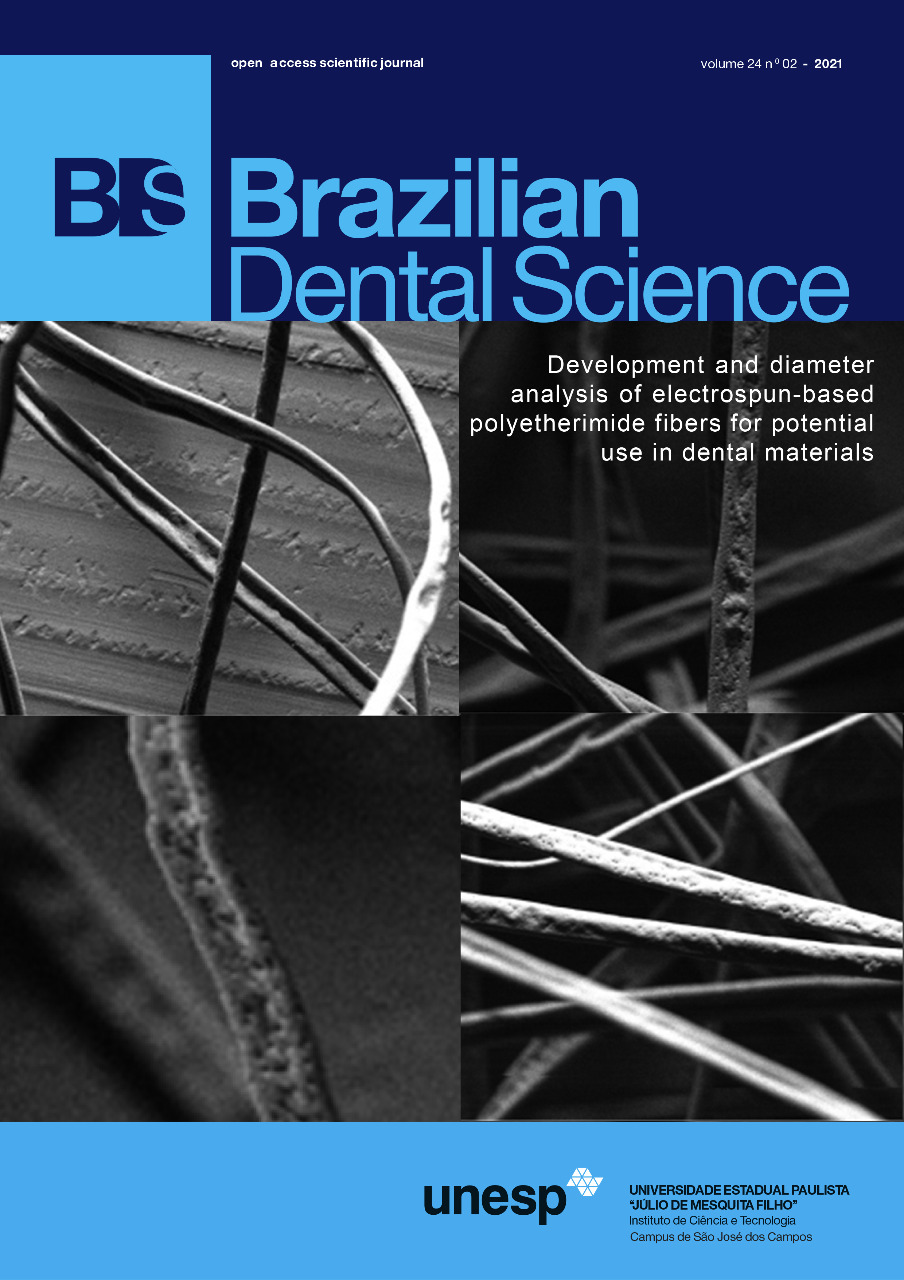A Cephalometric comparison of dentofacial parameters between Yemeni and Caucasian adults
DOI:
https://doi.org/10.14295/bds.2021.v24i2.2454Resumo
Objective: The purposes of this research were to establish cephalometric standards for Yemeni adults and to compare them with those of the Caucasians. Material and Methods: 100 Yemeni students (fifty males, mean age of 23.6 ± 2.1 years, and fifty female, mean age of 21.5 ± 3.1 years) with normal occlusions and wellbalanced faces were involved in the study. Inclusion criteria were a class I malocclusion with minor or no crowding, the whole teeth is present except third molars and no previous orthodontic, orthopedic or maxillofacial surgery treatment. Five angular and eighteen linear measurements were used for the skeletal, dental and soft tissue analysis. All participant’s lateral cephalometric radiographs were evaluated. The average values and standard deviations for all the angles and linear measurements were determined. The differences for each measurement between the Yemeni and Caucasian participants were calculated using unpaired t–tests. Results: Yemeni subjects had a more retrognathic mandibular positions (P< 0.05), protrusive mandibular incisors (P< 0.01), more protruded lip positions (P < 0.01), deeper mentolabial sulci (P< 0.01) and a steeper mandibular planes (P< 0.001) compared to the Caucasians. Yemeni females had a larger lower face height than Caucasian females (P< 0.001). Conclusions: The study provides specific standards for Yemeni adults and shows that the Yemenis had different skeletal and dentoalveolar cephalometric standards in comparison with Caucasians.
Keywords
Cephalometric comparison; Skeletal and dental features; Yemeni norms.
Downloads
Downloads
Publicado
Como Citar
Edição
Seção
Licença
TRANSFERÊNCIA DE DIREITOS AUTORAIS E DECLARAÇÃO DE RESPONSABILIDADE
Toda a propriedade de direitos autorais do artigo "____________________________________________________________________" é transferido do autor(es) para a CIÊNCIA ODONTOLÓGICA BRASILEIRA, no caso do trabalho ser publicado. O artigo não foi publicado em outro lugar e não foi submetido simultaneamente para publicação em outra revista.
Vimos por meio deste, atestar que trabalho é original e não apresenta dados manipulados, fraude ou plágio. Fizemos contribuição científica significativa para o estudo e estamos cientes dos dados apresentados e de acordo com a versão final do artigo. Assumimos total responsabilidade pelos aspectos éticos do estudo.
Este texto deve ser impresso e assinado por todos os autores. A versão digitalizada deverá ser apresentada como arquivo suplementar durante o processo de submissão.




























